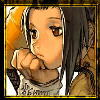Imagen Astronómica del Día
+26
hector
javivi100
russi
COLETA
Luzdivina
Paranoic 2.0
ANDRÁGORAS DE THARTSO
graciela sanchez
lilian
COOKIE
fran cisco
stelaplateada
helena
Mundoalerta
Jesús1976
Eva
tenochiclan
sandokan
Natha
kRITZKYA
braisss
Casiopea
Arwen
Nathalia
Kurysu
flipeante
30 participantes
MUNDOALERTA . LAS NOTICIAS MAS DESTACADAS DEL MUNDO :: NOTICIAS RELACIONADAS CON EL COSMOS :: Actualidad de eventos exteriores a nuestro Sistema Solar. (Galaxia/s, Estrellas, ...)
Página 18 de 49.
Página 18 de 49. •  1 ... 10 ... 17, 18, 19 ... 33 ... 49
1 ... 10 ... 17, 18, 19 ... 33 ... 49 
 re
re
es una maravilla de foto que tenemos todo el tiempo y no disfrutamos:D  somos parte del planeta
somos parte del planeta



graciela sanchez- Buen usuario

 cosa bonita...
cosa bonita...
› Follow this link to Login to MyNASA
Log In To MyNASA|› Sign Up
Image of the Day Gallery

Back to Gallery
Download Image
› Full Size[Tienes que estar registrado y conectado para ver este vínculo]
Stars Adorn Orion's Sword
This
image from NASA's Spitzer Space Telescope shows what lies near the
sword of the constellation Orion -- an active stellar nursery containing
thousands of young stars and developing protostars. Many will turn out
like our sun. Some are even more massive. These massive stars light up
the Orion nebula, which is seen here as the bright region near the
center of the image.
Image Credit: NASA/JPL-Ca
Log In To MyNASA|› Sign Up
- NASA Home
- > Multimedia
- > NASA Images
- [Tienes que estar registrado y conectado para ver este vínculo]
- [Tienes que estar registrado y conectado para ver este vínculo]
- [Tienes que estar registrado y conectado para ver este vínculo]Share
Image of the Day Gallery

Back to Gallery
Download Image
› Full Size[Tienes que estar registrado y conectado para ver este vínculo]
Stars Adorn Orion's Sword
This
image from NASA's Spitzer Space Telescope shows what lies near the
sword of the constellation Orion -- an active stellar nursery containing
thousands of young stars and developing protostars. Many will turn out
like our sun. Some are even more massive. These massive stars light up
the Orion nebula, which is seen here as the bright region near the
center of the image.
Image Credit: NASA/JPL-Ca

lilian- Moderador Global

 Otra....
Otra....
Este otro bombon de chocolate es para Lizz, que siempre nos manda dulces...



lilian- Moderador Global

 Para todos uds companheros ...
Para todos uds companheros ...
Follow this link to Login to MyNASA
Log In To MyNASA|›
Image of the Day Gallery

Back to Gallery
Download Image
› Full Size[Tienes que estar registrado y conectado para ver este vínculo]
Swirling Landscape of Stars
This
swirling landscape of stars is known as the North America Nebula. In
visible light, the region resembles North America, but in this image
infrared view from NASA's Spitzer Space Telescope, the continent
disappears.
Where did the continent go? The reason you don't see
it in Spitzer's view has to do, in part, with the fact that infrared
light can penetrate dust whereas visible light cannot. Dusty, dark
clouds in the visible image become transparent in Spitzer's view. In
addition, Spitzer's infrared detectors pick up the glow of dusty cocoons
enveloping baby stars.
Clusters of young stars (about one
million years old) can be found throughout the image. Some areas of this
nebula are still very thick with dust and appear dark even in Spitzer's
view.
The Spitzer image contains data from both its infrared
array camera and multi-band imaging photometer. Light with a wavelength
of 3.6 microns has been color-coded blue; 4.5-micron light is
blue-green; 5.8-micron and 8.0-micron light are green; and 24-micron
light is red. This image is from February 2011.
Image Credit: NASA/JPL-Caltec
Log In To MyNASA|›
- NASA Home
- > Multimedia
- > NASA Images
- [Tienes que estar registrado y conectado para ver este vínculo]
- [Tienes que estar registrado y conectado para ver este vínculo]
- [Tienes que estar registrado y conectado para ver este vínculo]Share
Image of the Day Gallery

Back to Gallery
Download Image
› Full Size[Tienes que estar registrado y conectado para ver este vínculo]
Swirling Landscape of Stars
This
swirling landscape of stars is known as the North America Nebula. In
visible light, the region resembles North America, but in this image
infrared view from NASA's Spitzer Space Telescope, the continent
disappears.
Where did the continent go? The reason you don't see
it in Spitzer's view has to do, in part, with the fact that infrared
light can penetrate dust whereas visible light cannot. Dusty, dark
clouds in the visible image become transparent in Spitzer's view. In
addition, Spitzer's infrared detectors pick up the glow of dusty cocoons
enveloping baby stars.
Clusters of young stars (about one
million years old) can be found throughout the image. Some areas of this
nebula are still very thick with dust and appear dark even in Spitzer's
view.
The Spitzer image contains data from both its infrared
array camera and multi-band imaging photometer. Light with a wavelength
of 3.6 microns has been color-coded blue; 4.5-micron light is
blue-green; 5.8-micron and 8.0-micron light are green; and 24-micron
light is red. This image is from February 2011.
Image Credit: NASA/JPL-Caltec

lilian- Moderador Global

 Re: Imagen Astronómica del Día
Re: Imagen Astronómica del Día
lilian escribió:Follow this link to Login to MyNASA
Log In To MyNASA|›
- NASA Home
- > Multimedia
- > NASA Images
- [Tienes que estar registrado y conectado para ver este vínculo]
- [Tienes que estar registrado y conectado para ver este vínculo]
- [Tienes que estar registrado y conectado para ver este vínculo]Share
Image of the Day Gallery
Back to Gallery
Download Image
› Full Size[Tienes que estar registrado y conectado para ver este vínculo]
Swirling Landscape of Stars
This
swirling landscape of stars is known as the North America Nebula. In
visible light, the region resembles North America, but in this image
infrared view from NASA's Spitzer Space Telescope, the continent
disappears.
Where did the continent go? The reason you don't see
it in Spitzer's view has to do, in part, with the fact that infrared
light can penetrate dust whereas visible light cannot. Dusty, dark
clouds in the visible image become transparent in Spitzer's view. In
addition, Spitzer's infrared detectors pick up the glow of dusty cocoons
enveloping baby stars.
Clusters of young stars (about one
million years old) can be found throughout the image. Some areas of this
nebula are still very thick with dust and appear dark even in Spitzer's
view.
The Spitzer image contains data from both its infrared
array camera and multi-band imaging photometer. Light with a wavelength
of 3.6 microns has been color-coded blue; 4.5-micron light is
blue-green; 5.8-micron and 8.0-micron light are green; and 24-micron
light is red. This image is from February 2011.
Image Credit: NASA/JPL-Caltec
Alli me quiero zambullir...

lilian- Moderador Global

 mas cosas bellas de este maravilloso Universo nuestro...
mas cosas bellas de este maravilloso Universo nuestro...
- [Tienes que estar registrado y conectado para ver este vínculo]
- [Tienes que estar registrado y conectado para ver este vínculo]
- [Tienes que estar registrado y conectado para ver este vínculo]Share
Image of the Day Gallery

Back to Gallery
Download Image
› Full Size[Tienes que estar registrado y conectado para ver este vínculo]
When Galaxies Collide
This
interacting pair of galaxies is included in Arp's catalog of peculiar
galaxies as number 148. Arp 148 is the staggering aftermath of an
encounter between two galaxies, resulting in a ring-shaped galaxy and a
long-tailed companion. The collision between the two parent galaxies
produced a shockwave effect that first drew matter into the center and
then caused it to propagate outwards in a ring. The elongated companion
perpendicular to the ring suggests that Arp 148 is a unique snapshot of
an ongoing collision. Infrared observations reveal a strong obscuration
region that appears as a dark dust lane across the nucleus in optical
light. Arp 148 is nicknamed Mayall's object and is located in the
constellation of Ursa Major, the Great Bear, approximately 500 million
light-years away.
This image is part of a large collection of
59 images of merging galaxies taken by the Hubble Space Telescope and
released on April 24, 2008, the observatory's 18th anniversary.
Image
Credit: NASA, ESA, the Hubble Heritage (STScI/AURA)-ESA/Hubble
Collaboration, and A. Evans (University of Virginia,
Charlottesville/NRAO/Sto

lilian- Moderador Global

 Re: Imagen Astronómica del Día
Re: Imagen Astronómica del Día
lilian escribió:
- [Tienes que estar registrado y conectado para ver este vínculo]
- [Tienes que estar registrado y conectado para ver este vínculo]
- [Tienes que estar registrado y conectado para ver este vínculo]Share
Image of the Day Gallery
Back to Gallery
Download Image
› Full Size[Tienes que estar registrado y conectado para ver este vínculo]
When Galaxies Collide
This
interacting pair of galaxies is included in Arp's catalog of peculiar
galaxies as number 148. Arp 148 is the staggering aftermath of an
encounter between two galaxies, resulting in a ring-shaped galaxy and a
long-tailed companion. The collision between the two parent galaxies
produced a shockwave effect that first drew matter into the center and
then caused it to propagate outwards in a ring. The elongated companion
perpendicular to the ring suggests that Arp 148 is a unique snapshot of
an ongoing collision. Infrared observations reveal a strong obscuration
region that appears as a dark dust lane across the nucleus in optical
light. Arp 148 is nicknamed Mayall's object and is located in the
constellation of Ursa Major, the Great Bear, approximately 500 million
light-years away.
This image is part of a large collection of
59 images of merging galaxies taken by the Hubble Space Telescope and
released on April 24, 2008, the observatory's 18th anniversary.
Image
Credit: NASA, ESA, the Hubble Heritage (STScI/AURA)-ESA/Hubble
Collaboration, and A. Evans (University of Virginia,
Charlottesville/NRAO/Sto



 que extraña imagen,,,
que extraña imagen,,,
Invitado- Invitado
 Re: Imagen Astronómica del Día
Re: Imagen Astronómica del Día
Lizz escribió:lilian escribió:
- [Tienes que estar registrado y conectado para ver este vínculo]
- [Tienes que estar registrado y conectado para ver este vínculo]
- [Tienes que estar registrado y conectado para ver este vínculo]Share
Image of the Day Gallery
Back to Gallery
Download Image
› Full Size[Tienes que estar registrado y conectado para ver este vínculo]
When Galaxies Collide
This
interacting pair of galaxies is included in Arp's catalog of peculiar
galaxies as number 148. Arp 148 is the staggering aftermath of an
encounter between two galaxies, resulting in a ring-shaped galaxy and a
long-tailed companion. The collision between the two parent galaxies
produced a shockwave effect that first drew matter into the center and
then caused it to propagate outwards in a ring. The elongated companion
perpendicular to the ring suggests that Arp 148 is a unique snapshot of
an ongoing collision. Infrared observations reveal a strong obscuration
region that appears as a dark dust lane across the nucleus in optical
light. Arp 148 is nicknamed Mayall's object and is located in the
constellation of Ursa Major, the Great Bear, approximately 500 million
light-years away.
This image is part of a large collection of
59 images of merging galaxies taken by the Hubble Space Telescope and
released on April 24, 2008, the observatory's 18th anniversary.
Image
Credit: NASA, ESA, the Hubble Heritage (STScI/AURA)-ESA/Hubble
Collaboration, and A. Evans (University of Virginia,
Charlottesville/NRAO/Sto


que extraña imagen,,,
Ahahahha!!!!!!!!!!!!!! Sos terrible... no habia reparado...

lilian- Moderador Global

 Re: Imagen Astronómica del Día
Re: Imagen Astronómica del Día
Disculpen.
Última edición por Diversidad el Vie Oct 21, 2011 3:40 am, editado 2 veces

Invitado- Invitado
 Re: Imagen Astronómica del Día
Re: Imagen Astronómica del Día
Diversidad escribió:Repetí sin querer, disculpen.
Hola Diversidad, que cosa repetiste?

lilian- Moderador Global

Página 18 de 49. •  1 ... 10 ... 17, 18, 19 ... 33 ... 49
1 ... 10 ... 17, 18, 19 ... 33 ... 49 
 Temas similares
Temas similares» Imagen Astronómica del Día
» Seguimiento y monitoreo de la actividad solar
» Se acerca un asteroide 1.000 veces más peligroso que el meteorito de Cheliábins...
» Seguimiento y monitoreo actividad solar
» Comparativa y seguimiento de actividad solar 2010
» Seguimiento y monitoreo de la actividad solar
» Se acerca un asteroide 1.000 veces más peligroso que el meteorito de Cheliábins...
» Seguimiento y monitoreo actividad solar
» Comparativa y seguimiento de actividad solar 2010
MUNDOALERTA . LAS NOTICIAS MAS DESTACADAS DEL MUNDO :: NOTICIAS RELACIONADAS CON EL COSMOS :: Actualidad de eventos exteriores a nuestro Sistema Solar. (Galaxia/s, Estrellas, ...)
Página 18 de 49.
Permisos de este foro:
No puedes responder a temas en este foro.

















 lo recibo
lo recibo 

